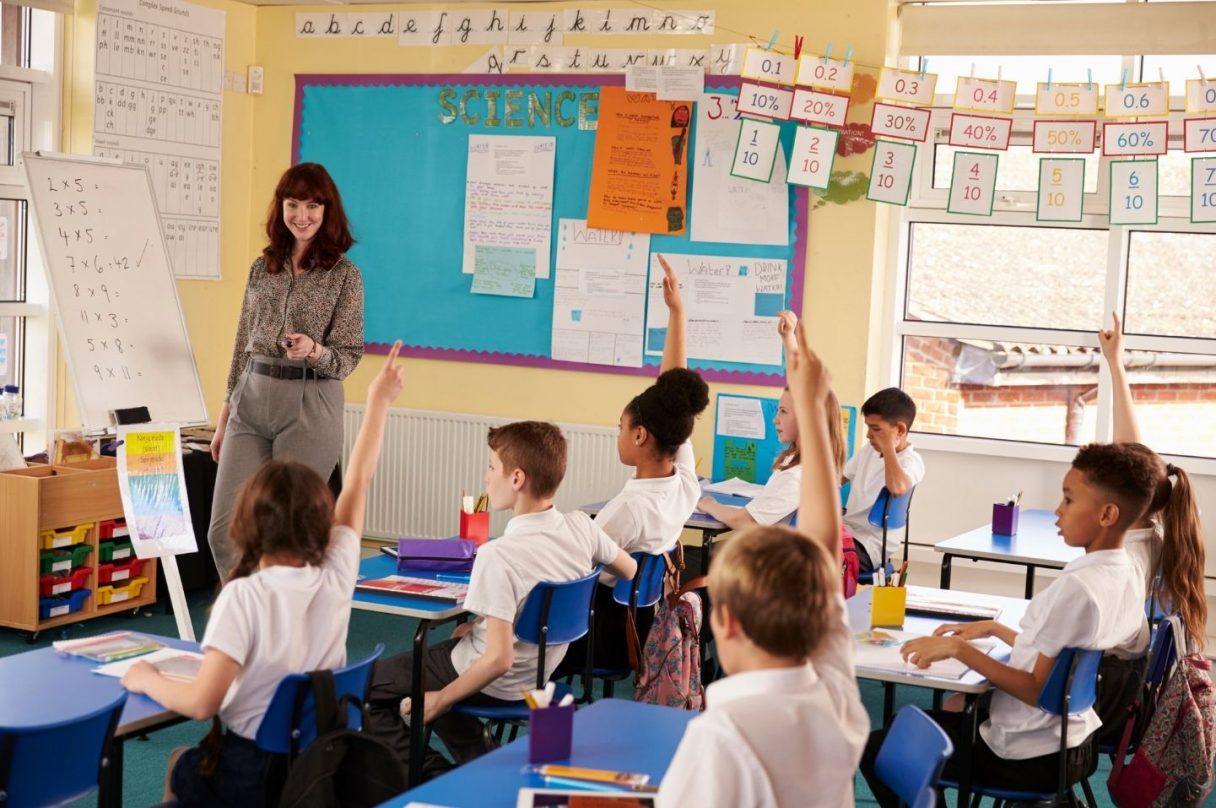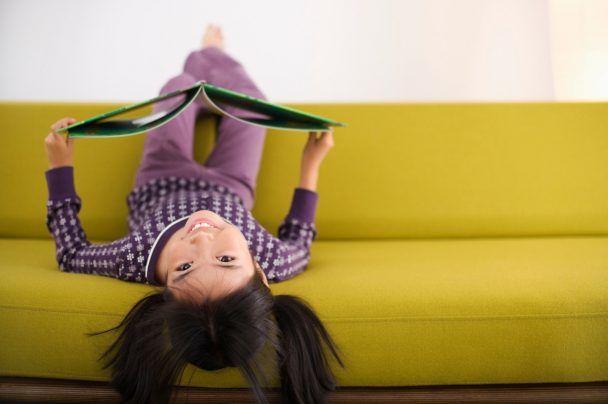What is a Flipped Classroom?
A student-centered approach to organize lessons and time
Flipped Learning is a student-centered approach that gets teachers asking themselves about the best way to organize their lessons and time with their learners. Since classroom time is always limited, the Flipped Learning method gets students more involved and puts precious classroom time to good use where everyone, not just the teacher, participates.
Flipped Classroom is all about flipping the order of how learning time is structured.
Schoolwork at home

The best way to describe the Flipped Classroom is to think of it as “schoolwork at home and homework at school.” In other words, “schoolwork at home” gives students the content they need outside of class time (at home). This content can come through a pre-recorded lecture from the teacher, or from an already created video on the topic by someone else on YouTube. It can also come through a reading or some kind of other research assignments that students carry out, on their own, and perhaps online, using their own computers. Students may be required to bring questions to class about the content they discovered at home or to take notes, which can serve as a classroom entrance ticket and proof that students are prepared to apply previously viewed content into classroom practice.
Homework at school
The “homework at school” part allows students to work on activities with other students in pairs or groups during class time. It also gives students a chance to get help from the teacher, ask questions, or engage with their classmates in, for example, problem-solving activities or other tasks where discussion, critical thinking, and getting involved in collaboration with others is required and necessary. The point is that class time becomes a time to interact and engage with the material along with the teacher’s guided assistance. In class, time can be supplemented by labs, hands-on projects, or field trips. It can also be devoted to clarifying or rehearsing information, exploratory exercises (including book exercises that would normally be done at home by students alone), in-depth investigations, and/or case studies.
Teachers who are skeptical of Flipped Learning should think about the possibility of at least trying the Flipped Classroom and using it on occasion. It takes effort on the teacher’s part, at least initially, to try something new, but many teachers will find that students who aren’t doing well won’t be able to hide in a classroom where they are required to participate and engage in active learning. It’s also possible that students will enjoy the thought of being more involved in the classroom.
Top 5 advantages of using Flipped Learning

- Students become more engaged in collaborative learning with peers
- Students receive more personal attention from the instructor in class
- Students are less passive and get more help during class time
- Students work on content at their own pace and prepare to be in class
- Students become more responsible for learning content on their own
Finally, the Flipped Classroom, obviously, has many advantages and the biggest one is providing students with the opportunity to participate actively. The issue is to use classroom time wisely and to avoid never-ending teacher-centered lectures in class, which lead to unengaged, very bored, and lifeless students!
How to get started with Flipped Learning
Start small
The best way to get started with Flipped Learning is to start small. It’s also important for teachers to keep in mind that they don’t have to flip every single lesson. One of the best suggestions is to start with what your students struggle with most. In other words, start with any lesson or topic where students have the most difficulty and where you’d like your students to receive more one-on-one time with you and with their peers. If you start with where your students have the most difficulty, you can pre-record your lecture and leave class time for in-class exercises, clarification, and activities.
It’s important to think about how long your video lecture is going to be timewise. Generally, a pre-recorded video with content your students will view, before coming to class, should be around 1 to 1.5 minutes per grade level. For example, if you have a 5th-grade class, videos can be anywhere between 5 to 7.5 minutes long, whereas a 12th-grade class can usually handle a 12 to 18 minutes long video. The great thing about a pre-recorded lecture is that students can stop and rewind if they need to hear something again or stop and reflect on a point while writing down questions to bring to class.
When making pre-recorded lectures, teachers shouldn’t worry about being perfect. Nothing is perfect, so don’t let the thought of perfection ruin your plans for providing students with recorded content before class. The most important aspect is to get started!
Sample lesson plan
When preparing a lesson, think about something you normally do inside of class (lecture) and move it outside of class, then think of something you normally do outside of class (homework) and move it inside of class.
Here is a Flipped Classroom example of an English lesson for non-native speakers of English:
Outside class
Students watch 30-minute lecture on a specific English grammar point.
Students write down questions and/or take an online quiz to check on their understanding.
In class 60 minutes
30 minutes – Students work on hand outs in pairs or groups that reflect the grammar point watched at home and get help from their peers and the teacher.
10 minutes – Students ask questions and discuss difficulties with teacher and peers.
20 minutes – Students present what they understood and provide their own examples or teachers talk about the online quiz and do a mini-lesson on the most misunderstood points.
Things to think about

When thinking about flipping, teachers can also consider using videos that have already been done by others. Many teachers make the mistake of thinking that they should record all of their own content but there may be content that has already been done by someone else that is just as good (if not better). Consider using websites such as khanacademy.com or ed.ted.com/lessons to find already prepared and professional content materials.
Those who use Flipped Classroom should consider using a learning platform where videos can be uploaded and where students can communicate with their peers and teachers through online forum discussions or ask questions before and/or after class.
Flipped Learning gives teachers the opportunity to differentiate learning and it is one of the best ways to accommodate the needs of all learners. It works with different paced learners by allowing students to hear pre-recorded content quickly or slowly (or again and again if necessary). It also provides teachers with opportunities to group learners according to their level or understanding when working on in-class activities or projects.
Further, a classroom that is flipped becomes more of a student-centered classroom where students are involved with hands-on learning, application, and getting the help they need!
Possible drawbacks of Flipped Classrooms

There are drawbacks to everything, and most teachers worry a lot about students not doing their homework or getting the content they need outside of class. The important thing to keep in mind is that there will always be students who never do homework and incorporating a strategy like the Flipped Classroom probably won’t change this fact. If teachers face students who don’t watch and/or prepare content outside of class, they might give students the opportunity to watch content during class time. This can be done in someone else’s classroom or in the school library while their classmates have the chance to work together and get help with content they have already watched and/or prepared.
Some teachers are worried that students won’t be able to ask questions for clarification during a recorded lesson or that students may have trouble getting used to doing something in a new way. This is especially true when students are often more used to teacher centered lectures than getting involved in a more active (versus passive) way during class. Change will take time for students to get used to and it might be best for teachers, who are interested in this approach, to start using Flipped Learning at the beginning of a new school year and letting students know on the first day that this is the plan.
Another major difficulty can include making sure every student has computer or internet access at home for content watching. If this is a “mission impossible,” teachers can think about other places where students can get content outside of class i.e. through an article they read, through computer access at school or the student’s very own cell phone, for example.
Conclusion
It’s not always easy for teachers to take risks or try new things but working in a more student-centered and dynamic way can leave both teachers and students more satisfied with the instruction and learning that takes place inside the classroom.
Learning should be central, above all else, and teachers should encourage their learners to be involved as much as possible during valuable classroom time.
In order to do this, have a look at our Flipped Classroom online course and discover how to plan, create and apply a flipped lesson.
So, ask yourself what is the best way to spend your class time? You might just find a place for Flipped Learning and find out that it is another extremely useful tool to add to your teacher toolbox.
Check out our teacher training course if you wish to learn more about how to integrate Flipped Classroom into your classroom curriculum.


Very education. I am a teacher trainer ans I just learned about the approach and it would really work fro me. I am trying it class next week…
Excellent, Priscilla. Let us know how it goes!
I think this is great and I’m going to try it come January in my various classrooms.
Super Amos! Let us know how it goes. =)
I am convinced that this approach will benefit my students. In each of the classes, there are multi-level learners. The flipped classroom will definitely allow me to be more effective and will encourage more active learning in the classroom.
Absolutely! This approach is excellent for providing differentiation in any classroom. Good luck trying it out. =)
This is really nice, I am doing this course currently. This writeup is helpful, thanks, a lot.
We’re glad you find it useful. =)